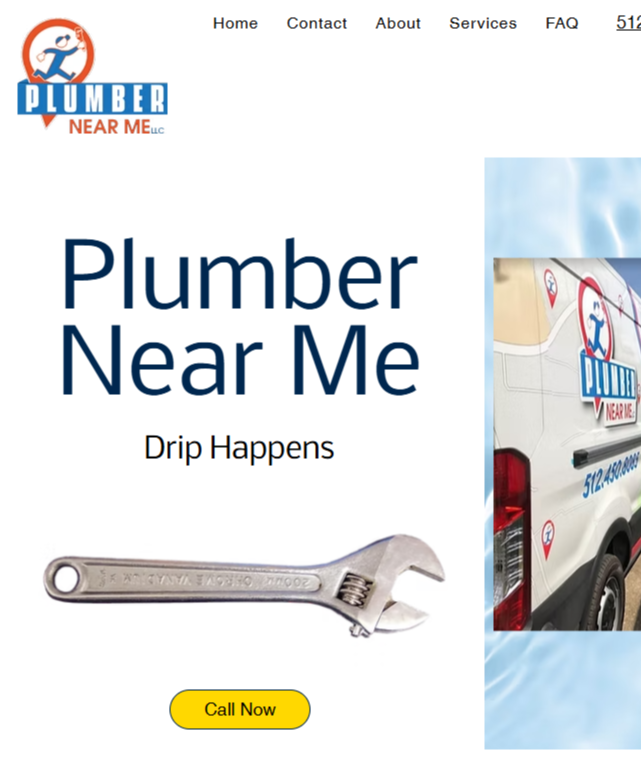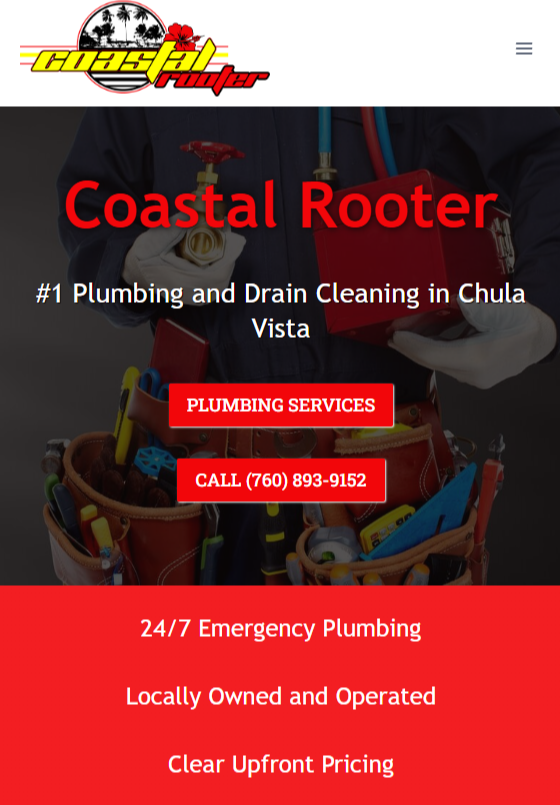Let’s just be real here: there’s a reason why your website sucks. Not because you’re dumb or lazy, but because you’ve been told a bunch of lies about what makes a “good” website. And those lies are costing you customers, traffic, and money every single day.
If your site isn’t generating leads, ranking on Google, or making you sales, it’s not a website. It’s a digital business card collecting dust.
Here are the biggest mistakes killing your online success:
Most business owners design their website to “look nice.” Congratulations, your cousin thinks it’s cute. But guess what? Customers don’t care about “cute.” They care about whether you solve their problem.
Your homepage should function like a funnel. Clear headline, what you do, why you’re better, and a giant call-to-action button. If someone lands on your site and doesn’t know what to do in three seconds, you already lost them.
Nobody is waiting ten seconds for your homepage to load. Every second of delay destroys conversions. Amazon literally studied this: every 100 milliseconds of load time = lost sales.
And yet, most small business sites are bloated with giant images, clunky themes, and garbage hosting. If your site isn’t lightning-fast, you’re giving customers away to your competitors.

Your website can be beautiful, but if it doesn’t rank, it’s worthless. Period. Most people never scroll past the first page. If you’re on page two, you don’t exist.
Here’s the kicker: most sites are built without SEO in mind. No keyword strategy, no local SEO, not even basic title tags. That’s like opening a restaurant with no sign on the building. Don’t act surprised when nobody walks in.
People don’t buy from websites they don’t trust. And your site screams “sketchy” if it has blurry logos, generic stock photos, or zero reviews.
Think about it: if a customer is about to hand over their credit card or book an appointment, they need proof you’re legit. Real testimonials. Case studies. Industry certifications. If you don’t have those front and center, you’re making it harder for people to choose you.
This one kills me. I see so many sites with zero calls to action. No buttons. No phone number in the header. No “Book Now” anywhere.
People are lazy. If you don’t tell them the next step, they’ll click away and never come back. Your site should scream: “Call Now. Book Today. Get a Free Quote.” Every page, every scroll.
Look, I get it. Wix, Squarespace, Elementor — they all promised you could build a “professional” site yourself in a weekend. And technically, you can. But let’s be honest: it looks like you built it yourself in a weekend.
You might have saved $2k upfront, but you’ve lost $20k in missed sales because your site looks like a hobby project. Amateur design signals amateur business. Period.
Your website is either your #1 salesperson or your biggest bottleneck. There’s no in-between. If it sucks, it’s literally repelling customers, killing your ads, and wasting your marketing dollars.
But here’s the good news: every mistake I just listed is fixable. And when you fix them, your website goes from being a liability to being an asset that prints money.
It’s not rocket science. But it does take the right team, the right process, and a willingness to stop treating your website like a “pretty brochure” and start treating it like the most important sales tool in your business.
If you want more leads, more customers, and more revenue, stop pretending your website design is “good enough.” It’s not. If it was, you wouldn’t be reading this right now.
Your website sucks. And that’s okay — because we can fix it. At Nickel SEO, we build websites that are fast, SEO-ready, and designed to do one thing: make you money.
So here’s the choice: keep your DIY site that nobody trusts, or get a professional site that finally pulls its weight.
Your move.
Beyond poor content and lack of optimization, there are several other factors that could be holding your website back from success. Business owners often overlook these critical elements, leading to a subpar user experience and diminished online visibility.
Your website design is the first thing visitors notice. An outdated, clunky design can immediately turn people away, making your business seem out of touch or unprofessional. Web design trends change over time, and what looked great five years ago might now seem dated. Websites with slow load times, confusing layouts, or cluttered interfaces frustrate users, resulting in higher bounce rates and fewer conversions.
The Fix: Invest in a modern, responsive design that provides a seamless user experience across all devices. A clean, easy-to-navigate site builds trust and credibility, ensuring visitors stay longer and engage with your content.

Many websites fail to guide users toward taking the next step. Without clear, compelling CTAs, visitors won’t know what action to take, whether it’s contacting your business, signing up for a newsletter, or purchasing a product. A website without CTAs is like a store without a checkout counter—it’s confusing and ineffective.
The Fix: Make sure each page includes well-placed CTAs that stand out visually and encourage users to take action. Use clear language like “Contact Us,” “Get a Free Quote,” or “Shop Now” to drive conversions.
With mobile traffic accounting for more than 50% of all web traffic, not having a mobile-optimized website is a huge mistake. If your site isn’t responsive—meaning it doesn’t adapt to different screen sizes—it’s going to be difficult for mobile users to navigate, leading to a poor user experience and lost leads.
The Fix: Ensure your site has a responsive design that works seamlessly on mobile devices. Mobile optimization is not only important for user experience but also for SEO, as Google’s mobile-first indexing prioritizes mobile-friendly sites in search rankings.
In today’s world, consumers rely heavily on reviews, testimonials, and case studies when deciding whether to trust a business. If your website lacks social proof, it’s missing a key opportunity to build trust and credibility with potential customers. Visitors want to see evidence that others have had positive experiences with your business.
The Fix: Incorporate client testimonials, case studies, and reviews prominently on your website. Displaying these throughout key pages will increase your credibility and encourage visitors to convert.
Many business owners fail to monitor how their website is performing. Without analyzing key metrics like bounce rate, session duration, and conversion rates, you won’t know where your website is falling short or where improvements can be made. Ignoring analytics is like flying blind—you have no insight into what’s working or what isn’t.
The Fix: Use tools like Google Analytics to track your website’s performance regularly. By understanding visitor behavior, you can make data-driven decisions to improve your site’s functionality, content, and overall user experience.
At Nickel SEO, we craft websites that go beyond good looks. Our focus is on building user-friendly, SEO-optimized sites designed to attract visitors, increase customer engagement, and generate more revenue for your business.
We start with custom designs that reflect your brand identity and speak directly to your target audience. Our websites are built with the user in mind, ensuring easy navigation and a seamless experience across all devices. A responsive design is essential for keeping visitors engaged and guiding them toward conversions.
With an SEO-first approach, we optimize every aspect of your site—from load times and mobile responsiveness to keyword integration and meta tags. This ensures your website ranks higher in search engine results, driving more organic traffic and putting your business in front of potential customers.
We also build in features that encourage conversion. From clear calls to action and intuitive contact forms to product pages that make purchasing easy, our websites are built to increase customer volume and boost sales.

If you’re looking for a website that not only looks great but drives real business growth, Nickel SEO has the expertise to deliver results.
At Nickel SEO, we specialize in helping businesses transform underperforming websites into powerful tools for growth. Whether you’re struggling with low-quality content, poor SEO, or a lack of engagement, we can help you create a website that delivers real results. Contact us today to learn more about how we can optimize your site for better traffic, higher conversions, and long-term success.

We specialize in web design, SEO services, and many other digital marketing services to help businesses attract more customers and increase revenue. We focus on creating effective strategies that drive traffic, improve search rankings, and build trust online. Our efforts are entirely dedicated to increase your sales with results driven and award winning digital marketing service.
Call if you're interested in real results and a real ROI.
9705 Tehama Ridge Pkwy Suite 257 Fort Worth, TX 76177
Monday – Friday, 9:00 am – 6:00 pm
Career Opportunities